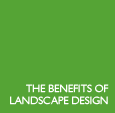Pruning
Pruning is one of the most neglected areas of gardening, but is one of the most important things you can do for the health of the plant. Gardening can be very expensive, and the lack
of maintenance can result in damage or death to the plants. From a landscape design standpoint leaving plants to outgrow themselves will result in a visual distortion of the design.
ExperTrees does not recommend that any home owner take on the task of pruning their plants and trees themselves, unless they are trained in this. You can easy cut too far or too much
or at the wrong time of year and damage the plant inadvertently. You can not put back what you cut off!
Not only do our experts at ExperTrees know all about the particular plant, they also know exactly what to prune, when to prune, how much to prune, and where to prune with regard to
future growth patterns of that plant.
We liken it to purchasing a new vehicle, you wouldn't spend money on a new vehicle and then never change the oil or neglect to maintain the car! A good guideline to consider in your
landscape planning is that you should anticipate spending approximately 5-15% of your total landscape costs every year on professional maintenance.
Having a professional from ExperTrees prune and maintain your plants will save you money in the long run. Our experts will take the opportunity, while pruning your plants, to observe
any insects or disease problems that are forming and allow you more time to take the proper steps to save the plant and stop any spreading of the insects or disease to other plants.
The risk of property damage due to falling dead tree limbs (during storms or otherwise) is minimized in a well pruned tree. A properly pruned plant will also provide you with more satisfaction,
in the form of more growth, more flowers, more light, more vigour, etc...
Reasons for Pruning
- train or re-direct growth
- maintain health by removing dead diseased or damaged wood
- increase quality and quantity of fruits and flowers
- allow sunlight to garden beds and lawns
- allow air circulation which will cut down on insects and fungus
- to aid in the unification of formal landscape plants (ie. Topiaries, spiral evergreens, formal hedging)
- remove winter damage
- add dimension to the overall landscape design
- remove all cross-over branches (any branches that may rub each other and cause damage)
The Three D's
- Dead Wood:
- This is an excellent breeding ground for disease and it does not take very long for insects to start burrowing into the soft, decaying wood, building nests and laying eggs for future
generations. Cut out all dead sections as soon as possible and never leave stubs which will die back and cause such areas in the future.
- Damaged Wood:
- Although a branch may still show healthy signs of life, if it is damaged then sooner or later some form of disease will enter the tree through this section. Pruning to prevent is
therefore better than pruning to cure.
- Diseased Wood:
- Diseases should be removed as soon as possible. All branches should be burned or disposed of. Do not leave on the property or compost pile.
Do not neglect pruning, get a professional to do it properly and you will reap the rewards.
NOTE: Many lawn maintenance companies provide pruning as part of their lawn maintenance packages. You may have this as part of your package right now. Often lawn maintenance
companies have very little experience or the specific knowledge needed to properly prune. Be aware if they pull out a gas-powered hedger and start pruning with that! Gas Hedgers are
an extremely fast way for these companies to prune, but they can result in severe tearing and ripping damage to the plant. ExperTrees prunes all plants by hand to ensure a proper, clean,
healthy, and exact cut every time. ExperTrees disinfects all pruning tools after each use. This prevents the passing on of diseases from property to property. This is not commonly done
by other companies.
|





